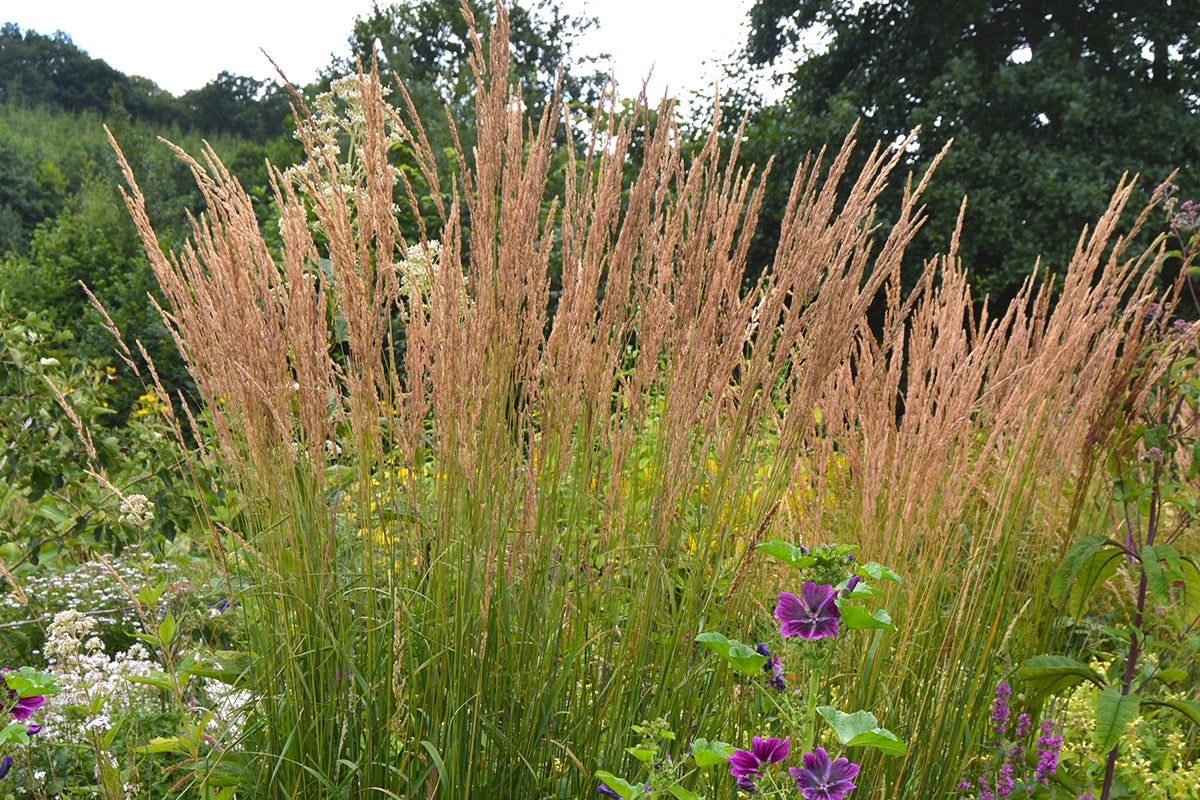Calamagrostis 'Karl Foerster'

November used to be the nadir of the garden year, with nothing in flower, autumn colour fallen and all borders cut back and bare. No more! Ornamental grasses, discussed recently by Annie, have come to the rescue. I'd like to focus on one in particular, which looks good from June well into the new year, and is arguably one of the most important plants for the November border, whether you choose to have cut down your dead perennials stems by now, or not, or indeed have had them flattened by autumn wind and rain. This 1.5m high grass will stand all that autumn weather (and indeed, American east coast hurricanes too) and continue to stand proud.
What better plant to celebrate the 150th anniversary of the influential German nurseryman Karl Foerster (mentioned previously in connection with Rudbeckia 'Goldsturm') who apparently first bred it. It grows bolt upright, and spreads at the stately pace of a few centimetres per year, so for the first few years it reads as a column or pillar, and so makes an ideal 'punctuation' for perennial borders. After a few years, the clump becomes wider and more dominating so this might be the time to divide it, which is easily done. I always used to leave cutting it back as late as possible, until just before snowdrop emergence time in February. Sometimes I'd even set fire to the dead stems on a dry day, a few seconds of flames leaping 4m in the air made for less work than carrying the debris to the compost heap. Growth would restart in March and the cycle begin again.







